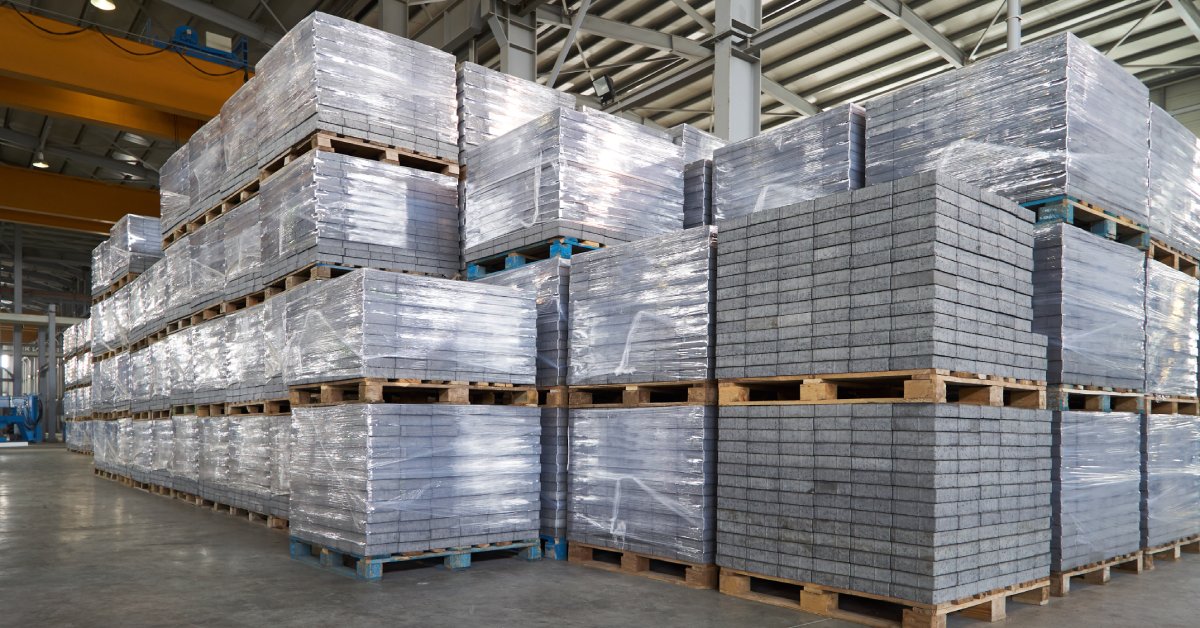- By First Alliance Logistics Management
- February 17, 2025
- Buying Pallets
Palletizing heavy items is pivotal in ensuring safe transportation and efficient warehouse operations. Improper palletization methods can lead to risks like damaged products, increased handling costs, and workplace hazards. Implementing the best practices for palletizing heavy items can create structured and more reliable processes while reducing those risks.
From labeling pallets to securing heavy items, each one of these tried-and-true approaches helps your company meet its many demands safely and efficiently.
Secure and Stabilize Items
During handling and transporting, you see if your palletizing process is successful with basic foundational rules. Some of those principles include loading heavy items evenly across the pallet, which ensures uniform weight distribution. Doing this will avoid imbalances that could lead to stacked pallets toppling over.
Other equipment to use is high-quality shrink wrap or stretch film, which can hold palletized items in place and prevent shifting. Further, enhance the stability by reinforcing the load with corner protectors and straps.
Use Proper Placement Technique
Always use proper placement techniques, like placing the heaviest items at the bottom. This creates a low center of gravity and reduces the risk of the entire pallet turning on its side. Plus, with the added stability, you also get the benefit of maximizing available space on the pallet.
Place any products flat when possible, and stack items vertically before adding anything horizontally on top. Avoid gaps in the stack and use the shape of the pallet to create the shape of your load and keep the load primarily on the pallet without having items hangover. With these efficient placement techniques, you will have more assurance of the integrity of your palletized items.
Select the Right Pallets
As you select the right pallets for your loads, you want to keep in mind that they need to be structurally sound and capable of bearing the weight. You wouldn’t want your palletized items to warp the pallet or collapse it altogether, risking damage to your goods or equipment.
For example, wood pallets are common for construction materials, whereas steel pallets transport heavy metals or chemicals. Using pallets with exact dimensions for the load type can improve transportation efficiency.
Prioritize Safety Standards
Safety measures should always accompany palletizing heavy items. Some of these measures include using heavy equipment such as forklifts or pallet jacks that suit the pallet’s weight capacity during movement and lifting.
Another part of the standards is training employees in ergonomic lifting techniques to prevent workplace injuries. Complying with safety regulations protects personnel and safeguards the load from unintended harm.
Label and Document the Pallets
Pallets with proper labeling increase organization and accountability in logistics operations. Carefully affixed labels containing weight limits, item descriptions, and destination details streamline warehouse management and minimize the chance of errors during shipment.
Documentation like load assessment reports further records the load’s specifications for the warehouse team’s reference.
Increase Operational Efficiency
Use these best practices for palletizing heavy items to increase operational efficiency and reduce costs. Connect with First Alliance Logistics Management for support in selecting the proper pallet types, from plastic pallets to new wood pallets for sale, and equip your operation with the necessary tools for a seamless palletizing process.

